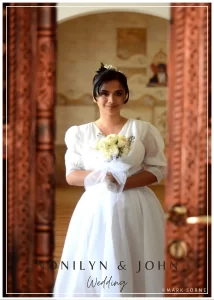The definition of a portrait is “a likeness of a person, especially one exhibiting the face, that is made by a painter or photographer, for example.” There are several guidelines for portrait photography that you should follow while taking images of people.
There are many different types of portraiture, including close-ups, facial shots, upper body views, and environmental photographs. When creating an environmental portrait, you focus on the subject and the surroundings that add to their unique characteristics.
People sometimes try to put on a face that does not truly represent who they are because they feel uncomfortable having a camera in their face. The true skill of portrait photography is attempting to capture subjects that are at ease and unafraid of the camera.
A lot of experienced photographers employ methods in an effort to capture the true essence of their subjects. For example, the subject may count to three to signal that they are ready, and the photographer might then impromptu capture a few more shots of them relaxing after the planned image. Usually the unplanned shots are the ones that really capture the essence of the subject; most of the time, the subject won’t even know that many shots were taken.
Experts also frequently employ the more common strategy of telling humorous jokes that genuinely make their subjects laugh or smile. I have no doubt that you have experienced anything similar.
1. Taking pictures close to the subject
These usually merely cover the head and shoulders of the subject. They form a framing for the face. These are the most well-liked and proficient at capturing glamour and emotions in photos. It is vital for them to have light coming from a reasonable angle. To accentuate wrinkles or other little details, light should come from the side or the top. For the most beautiful images, a gloomy day is ideal. Alternatively, you might try creating diffused lighting to reduce shadows. Make sure the topic is also brighter than the backdrop to reduce distraction.
For less obtrusive close-up portraits, use a wide aperture (low f/stop) to blur the background. Professional photographers usually use a fixed telephoto lens with a focal length of 90 mm or more when taking portraits in order to reduce the prominence of the subject’s nose or any other undesirable characteristics. It functions because, at that distance, no feature—not even the nose—seems to be closer to the camera than the rest of the face.
2. Upper Body or Midrange Portraits
Since it’s not as intimate, the person is usually more relaxed, making it easier to capture. These display slightly more of the background than close-ups do. They are regularly used by both single topics and many subjects. Pictures of this kind are taken to remember special occasions like birthdays, yearbooks, graduations, and other get-togethers. A fixed telephoto lens of about 90 mm or a wider angle might be ideal, depending on the number of subjects.
3. Outside Headshots
These are the portraits that offer a glimpse into the life of the person. They may show the subject doing their favorite pastime, for example, or they could show only a part of the subject. These are most effective in enlightening the audience about a subject. They are almost often used by photojournalists to investigate the lives of fascinating people. They also create amazing monochromatic photos.
Make use of this information to choose the portraiture style you wish to follow and refine it before meeting with any significant clients.






